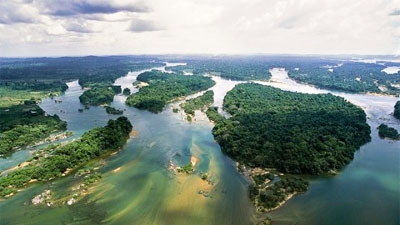Have you heard about white willow? Probably not, but that plant is the source of the main ingredient of a medication that you are surely familiar with: aspirin. The ancient Greeks were the first to use willow bark, the source of acetylsalicylic acid, to alleviate fevers and headaches.
Around the world, thousands of key compounds derived from plants and animals are used daily to make medicines. Eighty percent of developing countries rely on traditional medicine for their basic health care and it is estimated that international trade of medicinal plants is a US$60 billion business. Nevertheless, high rates of deforestation are threatening this global industry.
Of the 50,000 known medicinal plants –which are the basis of more than 50% of all medications—up to a fifth are at risk of extinction at the local, national, regional or global level due to deforestation.
The planet’s biological diversity is essential not only for the drug industry but also for other industries. According to the Ministry of Agriculture, in Peru– which ranks third among countries with the most biodiversity in the world – some 4,400 native plant species are used for food, medicines, dyes, fibers, timber, firewood and other products. This represents a business of US$4 billion annually.
From the Andes of Peru to the beaches of Mexico, the region is home to 34% of the world’s flora and 27% of its mammals.
Latin America includes seven of the world’s 17 most biologically diverse countries - Brazil, Colombia, Ecuador, Costa Rica, Mexico, Peru and Venezuela-, however, the region’s biodiversity is threatened by limited investment.
According to a World Bank study, Latin American governments allocate an average of just 1% of their resources earmarked for the environment to protected areas, which is the equivalent of US$1.18 per hectare, on average. According to the report, this figure covers just 54% of the maintenance costs of these areas given the threat of deforestation. The report states that the sustainable conservation of ecosystems in protected areas requires an investment of over US$ 1.08 billion.
The preservation of biodiversity not only helps guarantee the survival of the region’s forests and the purity of its rivers; it is also essential to Latin Americans’ daily lives, since the protection of the delicate ecological balance directly affects their quality of life, according to the study.
Many of the region’s most vulnerable ecosystems are located on valuable, highly coveted lands where agriculture, mining and rapid urban growth exert additional pressure on conservation initiatives.

